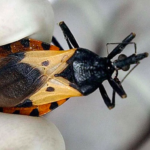The 2022–2024 findings presented in the new WHO/Europe fact sheet based on the 6th round of the WHO European Childhood Obesity Surveillance Initiative (COSI) reveal concerning trends in the prevalence of overweight and obesity among children aged 7–9 years across the WHO European Region. In comparison to previous estimates, the vast majority of the participating countries weren’t able to reduce their overweight and obesity levels. In those countries where changes occurred, increases of obesity levels were more common than decreases.
The fact sheet, which offers the first post-COVID-19 insights into the state of childhood overweight and obesity, underscores the urgent need for stronger policies to safeguard children from this growing challenge, paving the way for a healthier and more fulfilling future for all.
Today, overweight and obesity are among the leading causes of disability and death as they’re linked to many noncommunicable diseases (NCDs) – from cardiovascular diseases and diabetes to several types of cancer. Recent estimates suggest that they cause more than 1.2 million deaths across the Region every year.
A Regional overview
Data for the 6th round of COSI was collected in 37 countries and encompassed around 470 000 children.
According to the COSI round 6 report, 25% of children aged 7–9 years are living with overweight, with 11% affected by obesity. Boys are more significantly impacted than girls, with 27% overweight and 13% obese, compared to 23% and 9% respectively for girls. These findings indicate that overweight and obesity remain critical public health issues in the Region.
“Despite ongoing efforts and high-level discussions, the prevalence of overweight and obesity among children in this age group remains alarmingly high. A key challenge is commercial interests that obstruct decision-making processes and delay the implementation of strong, health-promoting policies. Evidence shows that policies such as mandatory restrictions on the marketing of unhealthy foods and mandatory front-of-pack labels on food products are effective tools to reduce childhood obesity. Urgent action is needed across all countries in the WHO European Region to safeguard health and secure a healthier future for the next generation,” said Dr Kremlin Wickramasinghe, WHO/Europe’s Regional Adviser on Nutrition, Physical Activity and Obesity.
Overweight levels range from 9% to 42%, and obesity levels from 3% to 20% across the participating countries. In more than half of countries, at least 1 in 10 children are living with obesity. In several countries, around 1 in 3 children – or even more – are living with overweight.
The post-COVID picture: patterns and trends
The latest round of data collection provides an important perspective on the state of childhood overweight and obesity following the COVID-19 pandemic.
Four countries – Finland, Malta, Slovenia and Sweden – recorded statistically significant rises in obesity prevalence, while only San Marino observed a decline.
For overweight, 4 showed an increase (Bulgaria, Malta, Slovenia and Sweden), while 4 showed a decrease (Greece, Israel, Italy and Spain).
This suggests that the pandemic may have exacerbated the problem in certain parts of the Region.
While some countries are seeing improvements, the data highlights the need for sustained efforts to address childhood overweight and obesity at both national and Regional levels.
Addressing the challenges
The findings from COSI round 6 provide critical evidence to inform public health policies aimed at reducing childhood overweight and obesity. Key takeaways include:
- The need for tailored interventions. Significant variations between countries highlight the importance of localized strategies to address the specific challenges faced by individual populations.
- A focus on prevention. Policy-makers should focus on creating environments which promote healthy diets and ample physical activity for both young and school-aged children.
- Monitoring and evaluation. Continuous surveillance through initiatives like COSI is essential to track progress, identify emerging trends and guide evidence-based policy decisions.
Building a healthier future for children
“Overweight and obesity among children are not just health challenges – they represent a broader societal issue that affects educational outcomes, economic productivity and overall well-being. The COSI report serves as a call to action for policy-makers, health-care providers and other stakeholders across the WHO European Region. Individuals and families can’t face this health threat alone. Policies that make healthier choices an easy choice are key to halting the obesity epidemic” said Dr Gauden Galea, Strategic Advisor to the Regional Director on NCDs and Innovation, WHO/Europe.
Data from COSI play a crucial role in monitoring progress and informing policy-makers as countries look towards the United Nations High-Level Meeting on NCDs in 2025, aiming to halt the rise in obesity and achieve Sustainable Development Goal Target 3.4, which seeks to reduce premature mortality from NCDs by a third.
COSI is now the largest childhood obesity surveillance initiative in the world. Since its first round of data collection in 2007, COSI has expanded dramatically from 13 countries to 46. Together, the 6 rounds of data collection have yielded data on a total of about 1.7 million children.
This database provides a clear picture of childhood overweight and obesity at the country level, helping nations track changes over time, compare their progress with others, and shape stronger and more comprehensive policies.












